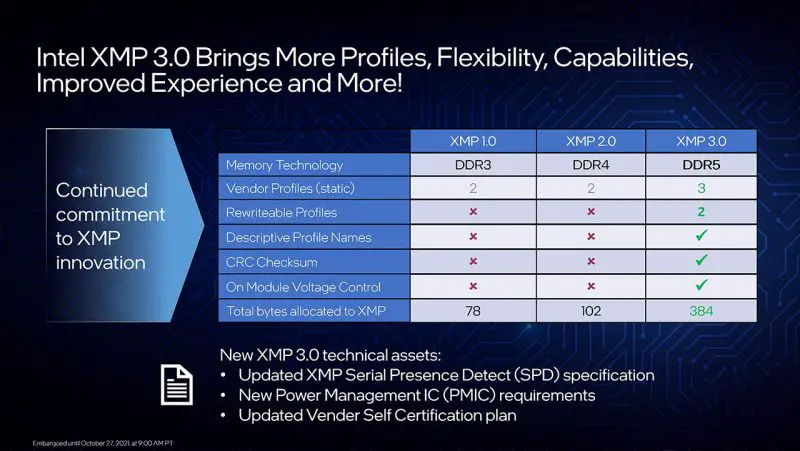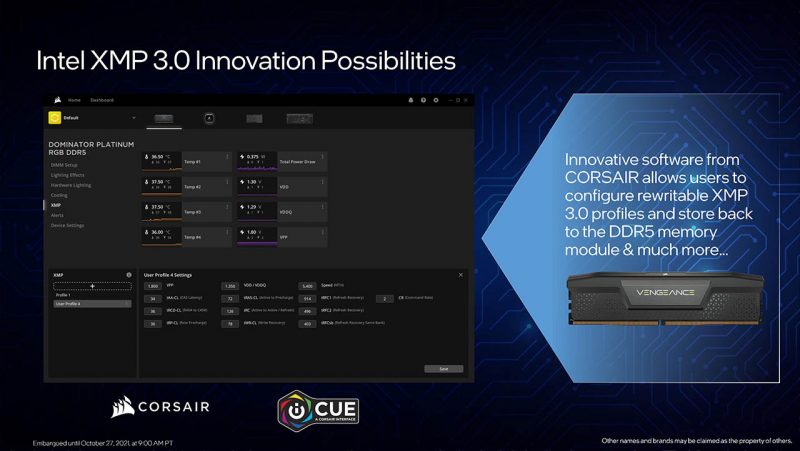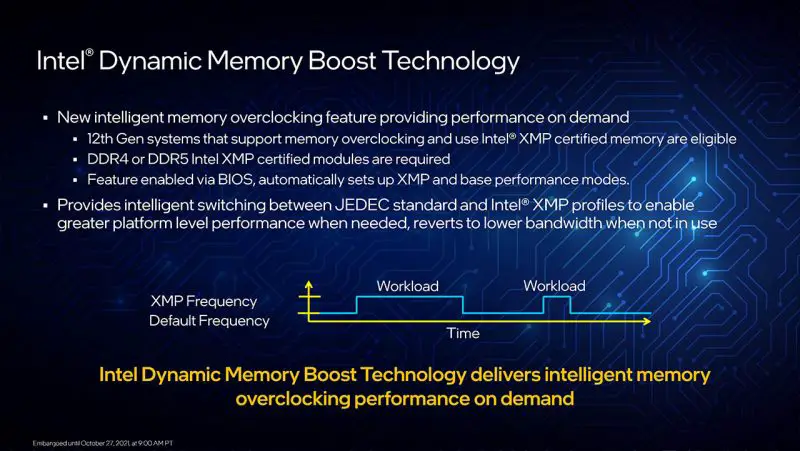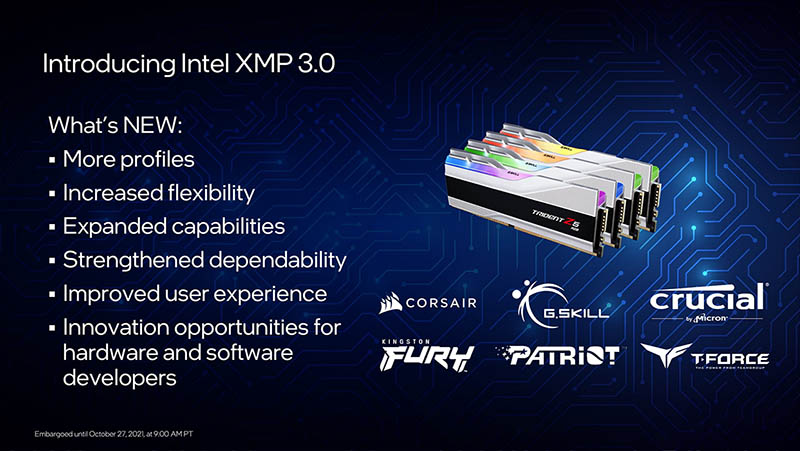Yesterday Intel officially announced its 12th. Alder Lake processor generation, the first generation to support the new DDR5 memories, and to better support these memories, also introduced the new XMP 3.0 standard for ram profile management.

Unlike XMP 1.0 and XMP 2.0 that allowed manufacturers to store only two configuration profiles, this new version will allow saving a total of 3 profiles to have a greater variety of options depending on whether we want to focus on bandwidth, latency, or some other appearance. In addition, for the first time, users will be able to create and store their own profiles in the module, allowing them to keep their settings even if they change the memories to another PC. For this functionality, space was reserved for two additional profiles, to which we can also assign a name for quick identification.

In addition to being able to be configured in the BIOS, some manufacturers will also offer the possibility of configuring these XMP profiles by software within the operating system. Intel and Corsair showed how these profiles can be configured within Corsair iCUE, allowing to assign a name to the profile and set its voltages, frequencies and latencies to customize the settings and obtain the balance that we want.
Dynamic Memory Boost

Although it is not directly related to XMP 3.0, another interesting technology related to memories that will be present on this platform is Dynamic Memory Boost. This technology allows the memories to run at their default frequency (3200MHz in the case of DDR4 or 4800MHz in the case of DDR5) when intensive reads and writes are not being performed, and then raised to the XMP profile frequency when maximum performance is required, saving energy at low loads. As you will have noticed in the clarification, it is compatible with both DDR4 and DDR5 memories, so it is not necessary to have DDR5 to take advantage of this new functionality.
All these new technologies will be available on the new Alder Lake platform, made up of 12th Intel Core processors. Generation and motherboards with 600 Series chipset. These components are already in pre-sale and will hit the market on November 4, the day on which we will also see their reviews.
What do you think about XMP 3.0 and Dynamic Memory Boost? Are you interested in any of its features?
Source: Anandtech















